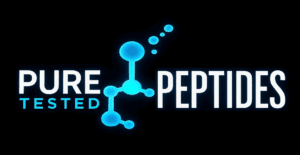Core Product Lines: Mechanistic Overview for Research-Only Use
Compliance: Products referenced are for laboratory research only and are not for human consumption. No medical claims are made.
Pure Tested Peptides organizes research materials across GH axis signaling, tissue biology and recovery, metabolic modulation, and mitochondrial longevity. Mechanistically, peptide research often centers on receptor–ligand engagement, second-messenger cascades (e.g., cAMP/PKA, AMPK), and downstream transcriptional programs measured in cell and animal models. For GH-axis analogs, long-acting growth hormone–releasing hormone (GHRH) designs have been shown to elevate GH/IGF-1 with preserved pulsatility in controlled settings (PMID: 16352683; PMID: 17018654). Tissue biology peptides frequently track focal adhesion (FAK/paxillin), angiogenesis, and ECM remodeling endpoints (PMC: PMC8275860).
Metabolic lines commonly interrogate incretin receptors (e.g., GLP-1R) and mitochondrial bioenergetics via AMPK/SIRT1. Canonical literature shows GLP-1R activation increases cAMP, engaging PKA/Epac pathways with cell-type–specific outcomes (PMID: 17306374; PMC: PMC6812410). Mitochondrial-derived peptides such as MOTS-c act through folate–AICAR–AMPK signaling to impact glucose handling and stress adaptation (PMID: 25738459; PMC: PMC4350682), while cardiolipin-targeting tetrapeptides (SS-31) have been mapped to inner-membrane interactions that influence redox and ATP production (PMID: 32554501; PMC: PMC7334473).
Across categories, analytical validation (HPLC/LC–MS) supports identity and purity reporting for reproducibility. Researchers typically align molecule choice with measurable endpoints—e.g., GH secretory kinetics; migration assays (scratch, transwell), angiogenic tube formation; mitochondrial membrane potential and ROS measures; or transcriptional signatures for collagen and antioxidant programs. Browse the full catalog.

Methodological Notes. To contextualize mechanistic observations, laboratories typically
report experimental temperature, buffer composition, biological replicates, and blinding/randomization
practices for image analysis and Western quantification. Where possible, orthogonal corroboration is
included: for example, receptor pharmacology by radioligand binding or BRET assays combined with
downstream second messengers; structural endpoints by both live-cell imaging and fixed immunostaining;
and bioenergetics readouts by oxygen consumption/ECAR coupled to targeted metabolomics. These practices
increase reproducibility and allow meaningful comparison across peptide classes and batches in research-only
settings (PMC: PMC7350483).
Statistics & Reporting. Typical analyses include power calculations, pre-registered endpoints,
and multiple-comparisons adjustments for families of tests. Effect-size reporting (Cohen’s d or Hedges’ g),
confidence intervals, and transparent outlier policies enable precise interpretation of receptor- or
mitochondria-targeted peptide experiments. Collectively, these design elements improve the signal-to-noise
ratio in bench studies and inform subsequent assay selection. Browse the full catalog.
